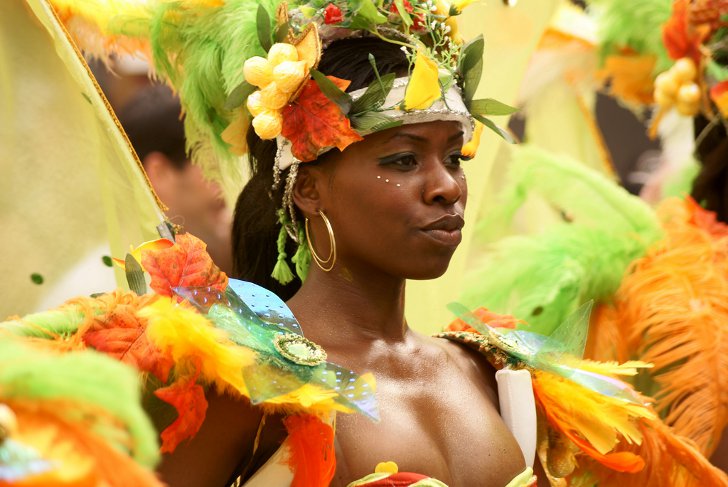The roots of the Notting Hill Carnival can be traced back to two separate but connected events. Following the 1958 Notting Hill race riots, Trinidad-born journalist and activist Claudia Jones organized an indoor event that showcased elements of a Caribbean carnival in a cabaret style. The first event was held in 1959. Jones kept organizing the indoor cabaret events until her death in 1964.
The other event considered the forerunner of the Notting Hill Carnival was the London Notting Hill Fair and pageant organized by community activist Rhaune Laslett to promote cultural unity and to raise awareness of poor living conditions in Notting Hill. When Laslett first raised the idea, she was not aware of the indoor cabaret events.
Laslett's event took place in August 1966. What started as a street party for neighborhood children turned into a full-blown carnival procession when a steel band and then most of the community joined in. That’s how the Notting Hill Carnival was born. By 1970, it included two music bands and about 500 dancing spectators.
Over the years, the Notting Hill Carnival has become one of the largest celebrations of Afro-Caribbean culture in the UK. Despite its name, it is not part of the pre-Lenten celebrations in Western Europe. The event is held over the August bank holiday weekend.
The Notting Hill Carnival kicks off on Saturday night with Panorama, a free open air event that includes performances by steel bands and other entertainment. Main highlights of Carnival Sunday include Jouvert (a street party that begins at dawn), a vibrant Children Parade, and calypso and soca performances.
But the main event of the Carnival is the Grand Finale held on Monday. The Monday Parade features around 60 groups in magnificent costumes dancing to the rhythms of steel bands. The parade is followed by more music, delicious Caribbean food, and more entertainment at Carnival Village.

Photo: Adrian Dutch




